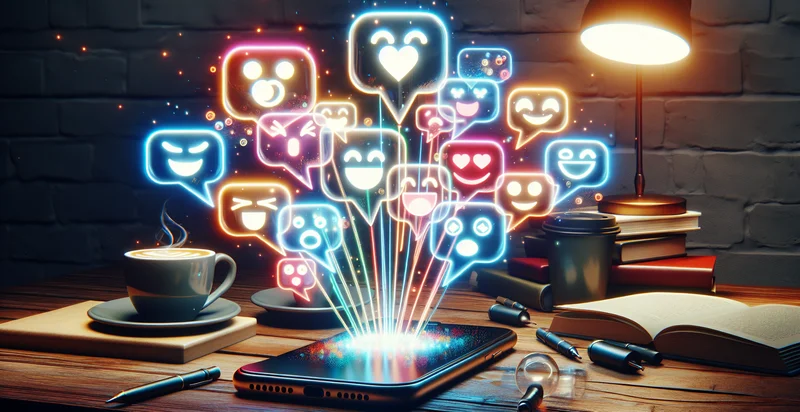Identify group chat sentiment
using AI
Below is a free classifier to identify group chat sentiment. Just input your text, and our AI will predict the overall sentiment of group chat messages. - in just seconds.

Contact us for API access
Or, use Nyckel to build highly-accurate custom classifiers in just minutes. No PhD required.
Get started
import nyckel
credentials = nyckel.Credentials("YOUR_CLIENT_ID", "YOUR_CLIENT_SECRET")
nyckel.invoke("group-chat-sentiment", "your_text_here", credentials)
fetch('https://www.nyckel.com/v1/functions/group-chat-sentiment/invoke', {
method: 'POST',
headers: {
'Authorization': 'Bearer ' + 'YOUR_BEARER_TOKEN',
'Content-Type': 'application/json',
},
body: JSON.stringify(
{"data": "your_text_here"}
)
})
.then(response => response.json())
.then(data => console.log(data));
curl -X POST \
-H "Content-Type: application/json" \
-H "Authorization: Bearer YOUR_BEARER_TOKEN" \
-d '{"data": "your_text_here"}' \
https://www.nyckel.com/v1/functions/group-chat-sentiment/invoke
How this classifier works
To start, input the text that you'd like analyzed. Our AI tool will then predict the overall sentiment of group chat messages..
This pretrained text model uses a Nyckel-created dataset and has 25 labels, including Angry, Anxious, Apathetic, Cheerful, Confident, Critical, Curious, Disappointed, Dismissive and Encouraging.
We'll also show a confidence score (the higher the number, the more confident the AI model is around the overall sentiment of group chat messages.).
Whether you're just curious or building group chat sentiment detection into your application, we hope our classifier proves helpful.
Related Classifiers
Need to identify group chat sentiment at scale?
Get API or Zapier access to this classifier for free. It's perfect for:
- Customer Service Monitoring: This function can analyze group chat interactions within customer support teams to identify sentiment trends. By determining the overall mood of conversations, managers can gauge team morale and address any emerging issues proactively.
- Marketing Campaign Analysis: Marketers can use sentiment analysis on group chats where marketing strategies are discussed. Understanding how team members feel about specific campaigns can help refine messaging and approaches, ensuring alignment and enthusiasm before launching initiatives.
- Product Development Feedback: During group chats focused on product development, sentiment identification can capture the emotional tone regarding new features or updates. This insight helps the product team prioritize enhancements based on collective enthusiasm or concerns.
- Team Collaboration Enhancement: Analyzing team collaboration chats can reveal sentiment patterns that indicate engagement levels. By identifying negative sentiment early, interventions can be initiated to improve collaboration and foster a more positive team dynamic.
- Employee Engagement Assessment: In internal chat groups, sentiment classification can provide HR with real-time insights into employee morale. Patterns of negativity can prompt timely actions to boost engagement, such as implementing new support measures or initiatives.
- Change Management Evaluation: When introducing organizational changes, sentiment analysis of relevant group chats can track employee reactions. Understanding the sentiment can help leadership adjust communication strategies to better manage the transition and address concerns effectively.
- Crisis Management Response: In critical situations, real-time sentiment analysis of emergency response chat groups can provide insights into team stress levels. By monitoring sentiment, leadership can offer necessary support and resources to maintain team effectiveness during high-pressure times.


